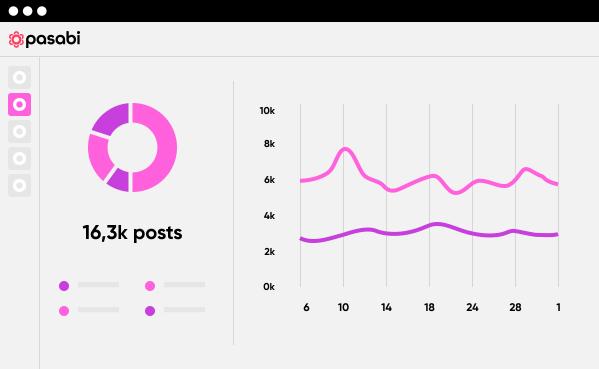In the digital age, where the virtual realm intertwines seamlessly with our daily lives, the proliferation of fake accounts has emerged as a formidable challenge. These digital impostors, often crafted with malicious intent, infiltrate platforms, skew analytics, and compromise security. As guardians of online integrity, it is imperative to equip ourselves with the knowledge and tools necessary to combat this growing menace. This article delves into the sophisticated world of fake account creation, unraveling the tactics employed by cyber adversaries and providing a comprehensive guide to detection and prevention. With an authoritative lens, we will explore cutting-edge technologies, strategic methodologies, and best practices that empower individuals and organizations to safeguard their digital ecosystems. Join us on this journey to fortify the virtual frontier and ensure authenticity reigns supreme in our interconnected world.
Spotting the Fakes Unmasking Telltale Signs of Fraudulent Accounts
In the digital age, the proliferation of fake accounts is a growing concern, and recognizing these imposters is crucial for maintaining the integrity of online platforms. To unmask these fraudulent entities, keep an eye out for certain red flags. Profile inconsistencies are a common indicator; look for mismatched profile pictures and usernames, or bios that are vague or filled with irrelevant information. Activity patterns can also reveal fakes, as these accounts often exhibit erratic posting behaviors or engage in spamming activities. Additionally, a lack of personal interaction, such as minimal comments or generic responses, can be a telltale sign.
- Profile Inconsistencies: Mismatched images and usernames, vague bios.
- Activity Patterns: Erratic posting, spamming behavior.
- Lack of Interaction: Minimal comments, generic responses.
By sharpening your vigilance and utilizing these insights, you can effectively combat the creation and proliferation of fake accounts. Remember, an observant eye is your best defense against digital deception.
Fortifying Your Defenses Implementing Robust Verification Systems
In the digital age, safeguarding your platform from fake accounts is crucial to maintaining trust and security. Implementing robust verification systems is a powerful strategy to ensure that only genuine users gain access. Start by integrating multi-factor authentication (MFA), which requires users to provide two or more verification factors to gain access. This could include a combination of something they know (password), something they have (smartphone), or something they are (fingerprint). MFA adds an extra layer of security that is difficult for fraudulent accounts to bypass.
Consider adopting AI-driven anomaly detection systems that monitor user behavior for signs of suspicious activity. These systems can identify patterns typical of fake accounts, such as rapid account creation or repetitive login attempts from the same IP address. Additionally, implement CAPTCHA challenges to differentiate between human users and bots. These tools, when combined, create a formidable barrier against fake account creation. By fortifying your defenses with these verification systems, you not only protect your platform but also foster a secure environment for your genuine users.

Staying Ahead Leveraging AI and Machine Learning for Detection
In the digital age, the proliferation of fake accounts poses a significant threat to online platforms. To combat this, businesses must harness the power of AI and machine learning. These technologies offer sophisticated tools for identifying patterns and anomalies that are indicative of fraudulent activities. By integrating AI-driven algorithms, platforms can analyze vast amounts of data in real-time, ensuring that suspicious behaviors are flagged before they cause harm.
Key strategies for leveraging AI in this battle include:
- Behavioral Analysis: Machine learning models can monitor user interactions and detect unusual patterns, such as rapid account creation or repeated failed login attempts.
- Image and Text Recognition: AI can assess profile pictures and bios to identify common elements associated with fake accounts, such as stock images or generic text.
- Network Analysis: By examining connections between accounts, AI can uncover networks of fake profiles that often work in tandem.
Implementing these strategies not only helps in detecting fake accounts but also in enhancing the overall security and trustworthiness of online platforms. As AI continues to evolve, its role in safeguarding digital ecosystems will only become more crucial.
Cultivating a Secure Environment Educating Users and Building Awareness
Creating a secure online environment begins with empowering users through education and awareness. By understanding the tactics used in fake account creation, users can become the first line of defense. Training sessions can be conducted to highlight the red flags of suspicious activity, such as sudden spikes in account creation or unusual email domains. It’s crucial to emphasize the importance of strong, unique passwords and the use of two-factor authentication to safeguard personal information.
- Recognize Phishing Attempts: Educate users on how to identify and report phishing emails that often serve as precursors to fake account creation.
- Verify Email Addresses: Encourage users to double-check the legitimacy of email addresses before clicking on any links or providing personal information.
- Utilize Reporting Tools: Make sure users know how to report suspicious accounts and activities, reinforcing a culture of vigilance.
Building awareness is not just about prevention but also about creating a community that values security. By fostering an environment where users feel responsible for their online safety, organizations can significantly reduce the risk of fake account creation and enhance the overall integrity of their platforms.





